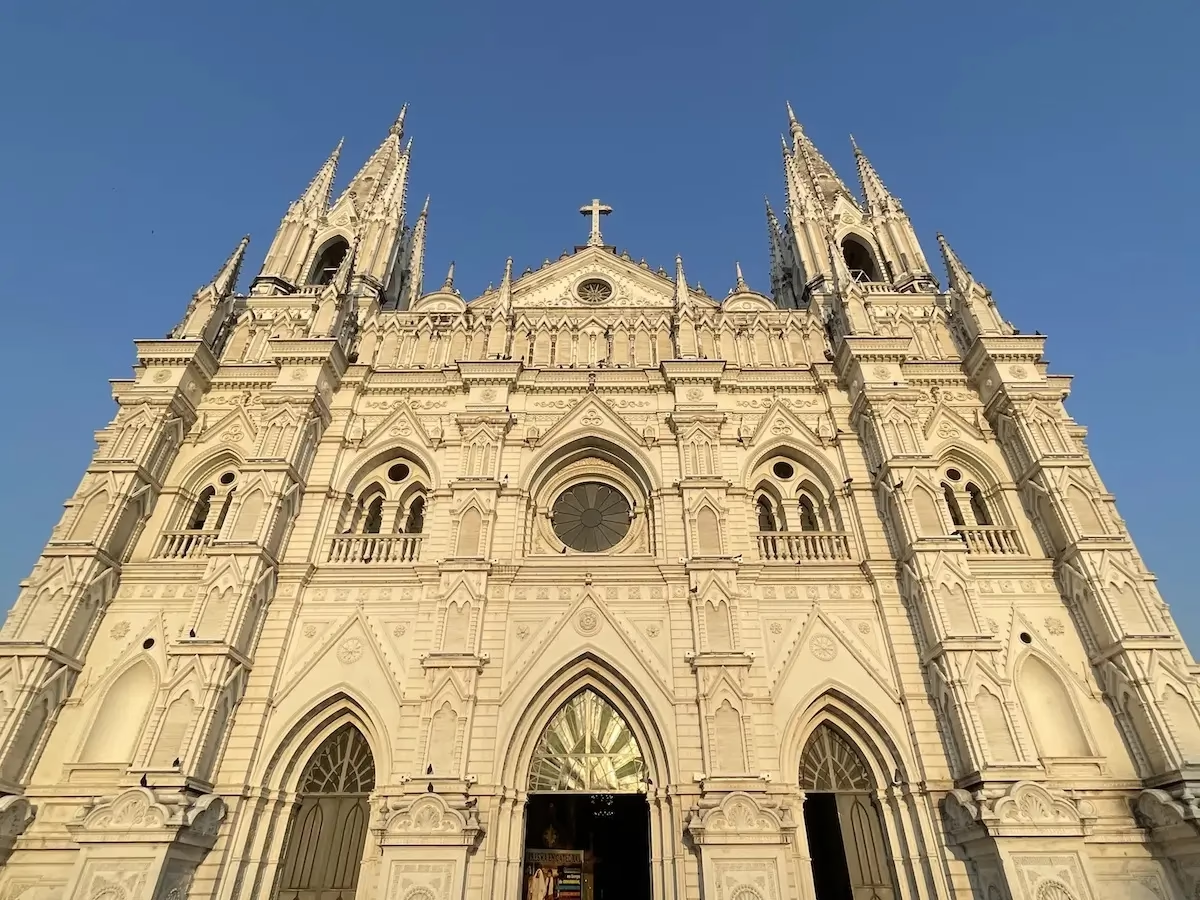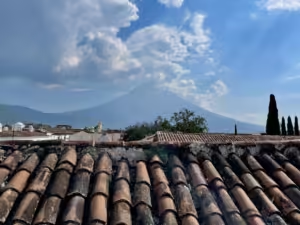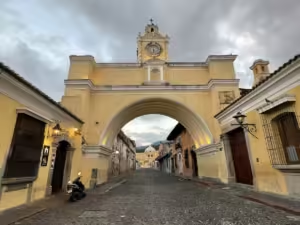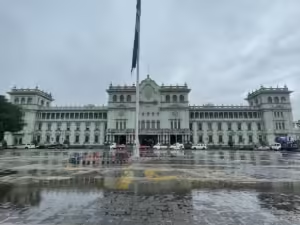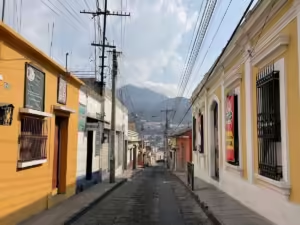Some cities immediately blow you away with their beauty and energy. Santa Ana is not one of those cities. However, look beyond the first glance and you’ll find a charming and place with plenty to keep you occupied for a few days. You’ll also find a city full of incredibly friendly, warm people who would love for you to enjoy their hometown.
Santa Ana is El Salvador’s second city, though it feels more like an amiable large town. The city is charming and relatively walkable, with a crumbling colonial center and plenty of neighborhood pupuserias. It’s the kind of place where the sidewalk drunks greet you with a friendly smile and you might still see a cow wandering down the middle of the street on a lazy afternoon. Despite its laid-back charm, Santa Ana also makes an excellent base for day trips to nearby volcanoes, lagoons and Mayan ruins.
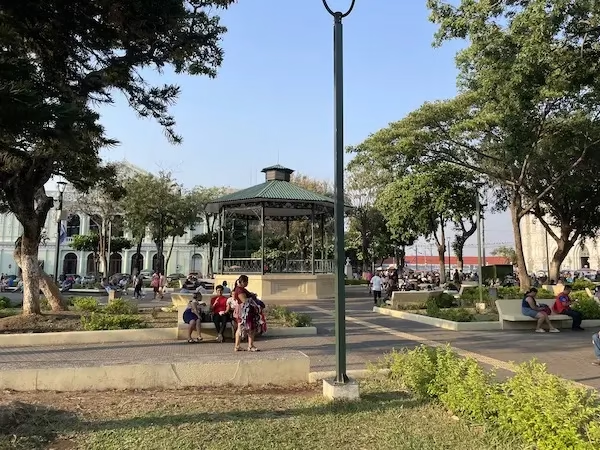
What to Know Before You Travel to Santa Ana
Santa Ana is the second largest city in El Salvador, after the capital San Salvador. Mayans first settled in the area during the classic period, though the Pipil conquered the area sometime around 1200. Then came the Spanish, who did what Spanish conquistadors do and killed and enslaved the natives. They founded the city named Santa Ana in the 1530s.
Santa Ana experienced its golden age during the first part of the 20th century, when it became a center for processing and shipping coffee. The city suffered greatly during the El Salvadoran civil war in the 1980s, which led to a large portion of the population immigrating to the U.S. and elsewhere.
Despite experiencing a post-war boom in crime and gang activity, Santa Ana is now perfectly safe. A lot of the economy relies on manufacturing and remittances from abroad, but the city is also trying to reinvent itself as one of El Salvador’s main tourist destinations.
Crime and Safety in Santa Ana
I’ve said it before and I’ll say it again. Santa Ana, and most of the rest of El Salvador, is very safe and calm now. The gangs are gone, and there’s a palpable sense of optimism in the air.
We aren’t big night people, but we’ve walked around Santa Ana after dark and felt perfectly fine. I’m sure there are still some sketchy areas, but most of the city is perfectly walkable and generally full of friendly people who want you to be safe and enjoy their hometown. El Salvador is one of the friendliest countries we’ve been to, and the people in Santa Ana were some of the friendliest in El Salvador.
There was a group of drunks who liked to hang out and drink on the street leading to from our hostel to the central park. One lazy afternoon, I heard one of the drunks shout at us and I thought to myself “here it is, this guy is going to come and harass us or something.”
Instead of asking for money or hassling us, the drunk gave us a boozy “welcome to El Salvador!” Then, in broken and slurred English, he listed off all of the nearby attractions we could visit during our stay in Santa Ana. He was just genuinely excited to see tourists. Some of this blog post is based on that drunk man’s advice.
I have some more thoughts about safety and crime in Central and South America. Read them here: Rethinking Travel Safety and Crime in Latin America
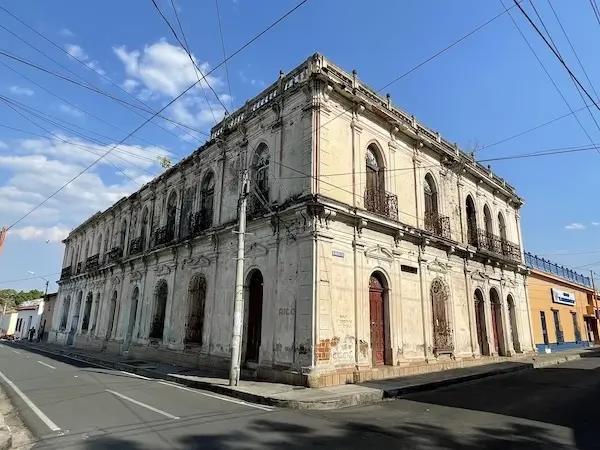
On one of the most fun, but also most stressful, aspects of travel is finding and booking places to stay. These days you have options ranging from dirt cheap hostel dorms to luxurious White Lotus style resorts. Thankfully, the internet is here to make finding accommodation easier.
Hostelworld is the go to app for finding hostels. For everything else, there’s Booking.com. If you book through either of the previous links, I’ll gain a small commission at no extra cost to you.
Transportation in Santa Ana
Santa Ana is well served by the bus network that crisscrosses El Salvador. It’s a small country, so nothing is more than a few hours away. You won’t need to worry about night buses here. You can take local buses from San Salvador and points beyond. If you’re coming from Guatemala, tourist shuttles from Antigua regularly go to Santa Ana.
The helpful website, Centro Coasting has information about how to get to different destinations in El Salvador and beyond. Be warned that schedules change often, so double check with your hostel before setting out.
The city buses within Santa Ana are a bit more confusing. We couldn’t figure them out without the help of a local. Luckily, most of Santa Ana is pretty compact and you can get around using the two feet the good lord gave you. Or spite His creation and take a taxi or an Uber.
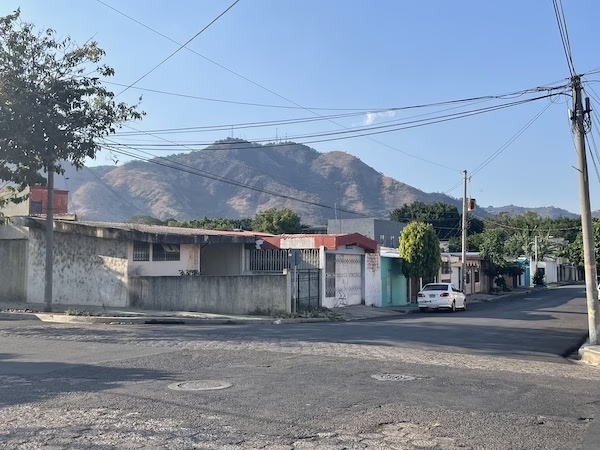
Where to Stay in Santa Ana
A lot of people will direct you to the Casa Verde Hostel. We had originally booked there, but canceled our plans and instead stayed at the lovely Altea Hostel, located north of the city center. The hostel is newly opened and owned by a lovely team of Salvadoran sisters who also run the confusingly named Casa Blanca Tu Casa. We didn’t stay there, either, but I will blindly recommend Casa Blanca Tu Casa based on our great experience at its sister hostel, Altea. If you book using any of these links, I get a small percentage at no cost to you.
Click here to book a stay at Altea Hostel
Click here to book a stay at Casa Blanca Tu Casa.
What to Do in Santa Ana
Santa Ana has a walkable city center and a handful of lovely old buildings to admire. It won’t compare to other nearby colonial cities like Antigua, Guatemala or Granada, Nicaragua. But, definitely be sure to check out the impressive, gothic looking cathedral just off the parque central. The National Theater and Municipal Palace are quite lovely as well, and there are a few hidden gems lingering on the side streets.
Santa Ana is also a great place to try Salvadoran food. We had some trouble finding restaurants near the central park, but there were plenty of street vendors. A short walk north of the park leads to a leafy residential area with plenty of delicious pupuserias. The nearby smoothie shops selling fresh blended juices are the most amazing thing in the world on a hot afternoon.
When you’ve finished wandering around the city it’s time to do some day trips. There are plenty of interesting things to do within a couple hours bus ride from the center of town.
For those anxious control freaks who absolutely need to plan everything in advance: may I suggest Get Your Guide for booking tours? They’re generally cheaper than online alternatives and offer a wide range of activities. If you book through the following link, I’ll get a small commission at no cost to you and you’ll gain the satisfaction of supporting an independent travel blog. Click here to explore tours in El Salvador.
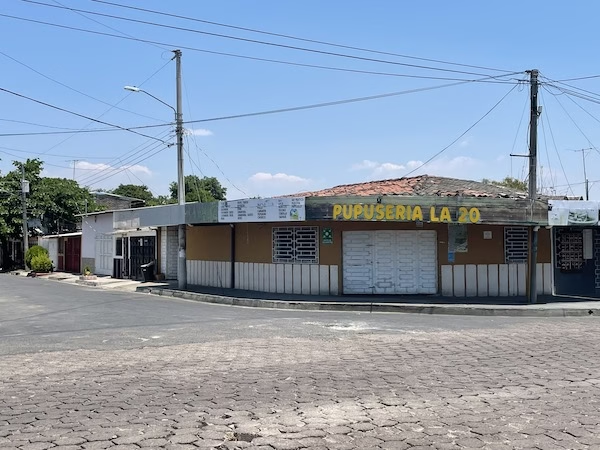
Hike Up the Santa Ana Volcano
Volcán Santa Ana is the highest volcano in El Salvador. It still only takes a few hours to make it to the top, so don’t expect the Andes or even Guatemala. However, just because it isn’t grueling doesn’t mean Santa Ana Volcano isn’t worth it. The volcano rewards those who commit to a moderate climb with stunning views of the surrounding countryside and a gorgeous crater lagoon filled with sulfuric turquoise water.
Guides are required for this hike, but it’s easy to join a tour at the base of the climb. You don’t need to worry about hiring a guide in advance. We went during Semana Santa, the holy week before Easter, and had no problem joining a group going to the top. It did feel like the entire population of El Salvador decided to hike up the volcano that day. Despite the crowds, I still had a great time.
You can take the bus number 248 from nearby the central bus terminal to Cerro Verde National Park. Be sure to catch the 7:30am bus to get to the park on time.
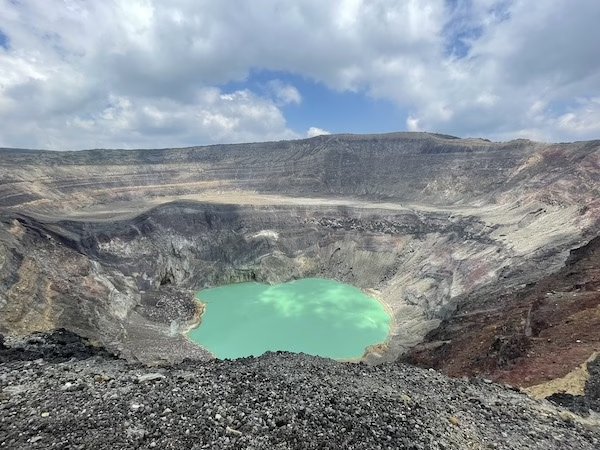
Visit Some Surprisingly Interesting Mayan Ruins
The Mayan ruins near Santa Ana aren’t nearly as impressive as those in Copán, Honduras or Tikal, Guatemala. You won’t see any intricately carved stones or towering pyramids here. However, for anyone interested in ancient Mayan culture, the collection of ruins in Western El Salvador are a must see.
The most fascinating site is called Joya de Ceren, and it’s only about an hour from Santa Ana. Joya de Ceren doesn’t have any major structures or sculptures. What it does have is a glimpse into the daily life of regular Mayan people. Ash from a volcanic eruption covered the village, much like Pompei, preserving the modest houses and village structures. Joya de Ceren gives a remarkable glimpse into what life was like for the ancient working class Mayan farmers and artisans.
If you really want to see some pyramids, you can stop by the nearby ruins of San Andrés. San Andrés has a few, relatively unimpressive, religious and royal structures. They’re pretty close to Joya de Ceren. We walked, though I would suggest taking the bus instead, since the sun is quite intense in these parts.
You can get to San Andres and Joya de Ceren by taking bus 201 to San Salvador and telling the driver where you want to get off. Be sure to keep an eye on your map and tell the driver again when you’re getting close. We didn’t do this and ended up having to cross the highway and walk an extra mile or so in the hot sun.
Speaking of hot sun, don’t forget to bring plenty of water and sun protection. There isn’t a lot of shade.
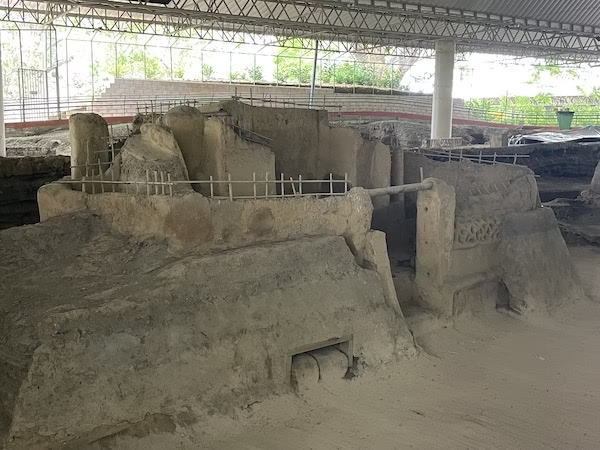
Swim in Lago Coatepeque, Central America’s Most Overrated Lake
It seems like every other blog, video and guidebook likes to sing the praises of Lago Coatepeque. The concept of a deep blue lake in a volcanic crater definitely sounds appealing. However, I personally found Lago Coatepeque to be a bit of a disappointment.
First of all, don’t believe anyone who compares Coatepeque to Lake Atitlán in Guatemala. Coatepeque is nowhere near as big nor is it as beautiful. Lake Coatepeque isn’t ugly by any means, but it just isn’t nearly as impressive as people make it out to be.
Secondly, there isn’t any public access to the lake. You have to pay to hang out at one of the lakeside bars or resorts. The price isn’t expensive, and in principle I really don’t mind paying for things. However, you end up feeling stuck in one place for the whole day. Instead of a natural lake shore, you just have wooden planks and jet skis. There isn’t any room to explore or walk around, just sitting at the bar.
Finally, aside from the handful of beach bars and resorts, the rest of the lake is surrounded by mansions and rich people vacation homes. This is where El Salvador’s elite comes to relax. I grew up in a working class family and I feel really awkward surrounded by luxury.
Now, I don’t want to be a hater. Lago Coatepeque is a pretty nice place to kick back and have a beer by the water. I just don’t think it really deserves the hype. It’s close enough to Santa Ana that you can visit for half a day and make up your own mind. Take bus number 242.
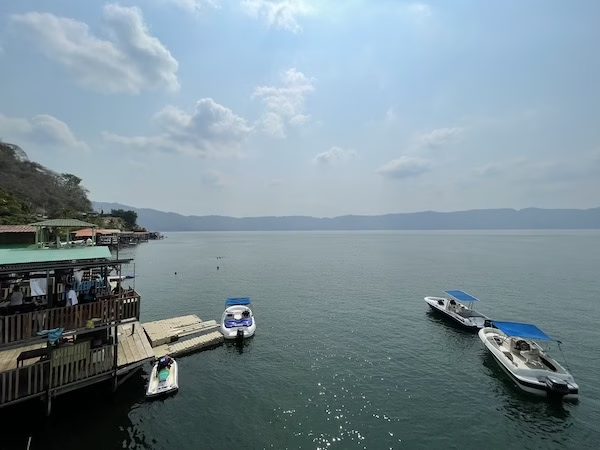
Did I Mention How Friendly People Are in Santa Ana?
I know I’ve said this a bunch of times before, but I feel like I have to say it again. People in and around Santa Ana were so gosh darn friendly and welcoming. The bar staff gave us free beers at Lago Coatepeque. We hitchhiked back from Volcán Santa Ana with some woman who shared her Uber with us. When we got back to the city, she walked with us to the bus stop and waited until the driver came so she could make sure we got to the right place. I have so many more anecdotes of locals in and around Santa Ana going out of their way to be kind and helpful to us.
Santa Ana has plenty of tourist sites to visit nearby. None of them are all that spectacular, to be honest. The main reason to visit here is for the people, not the tourist sites. Everyone just feels very genuinely excited to share their city and country with visitors.
Our time in Santa Ana almost felt like we were visiting long lost relatives. The city feels like a family of two hundred thousand people. Don’t come to Santa Ana for the lakes or volcanoes or even the ruins. Come to Santa Ana to experience the very best of El Salvador’s warmth and kindness.
Need more travel motivation for the rest of El Salvador? Check out our guide here: Exploring El Salvador: Central America’s Hidden Travel Gem is Ready to Shine
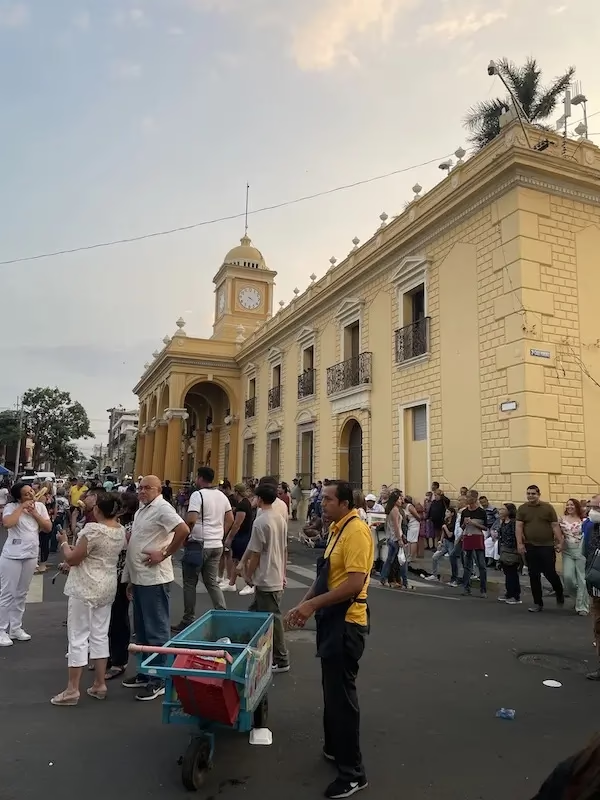
Useful Websites for Traveling El Salvador
As much as we might long for the days when you could show up to a town with nothing more than a beat-up guidebook and a sense of adventure, today much of traveling involves being glued to our phones making bookings. I’ve compiled some helpful apps and websites below that at least help make those bookings more convenient so you can spend less time staring at your phone and more time exploring at your surroundings. Some of these sites are affiliate links that give me a small commission at no cost to you if you chose to book through them. All of them are sites I’ve used personally and have no problem recommending.
Just be sure to do your due diligence as much as possible. Only hire local guides and try as much as possible to stay in locally owned hotels and hostels so that your hard earned travel dollars actually go to support the local economies of the places you visit.
Booking.com is basically the world’s only hotel booking website. They have hotels, guesthouses and vacation rentals all over El Salvador.
Hostelworld is the go-to site for booking hostels. If dorm rooms and shared bathrooms are your thing, you’ll find hostels all over El Salvador.
Get Your Guide offers tours and activities all around the world. Unlike some other sites and apps that do the same thing, you can actually find some reasonably priced deals here.
Centro Coasting is a great website to look up bus routes and times throughout Central America. Schedules change regularly, and the site is sometimes not as up to date as you’d like. However, it’s a good resource to help give you an idea when the buses leave, or at least get you to the right terminal.

